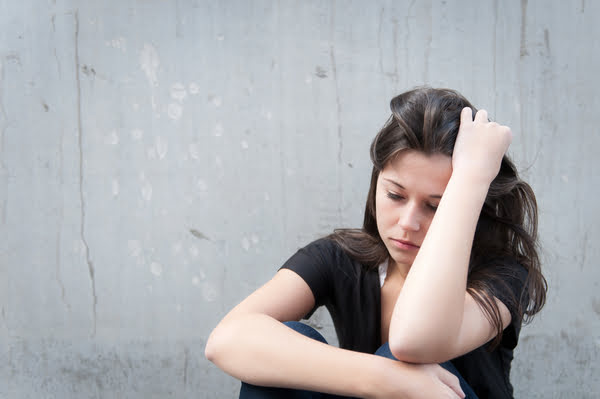Like every other universal emotion, sadness shows in our body language. People often don’t even have to utter “I’m sad” because they have sadness written all over them.
Sadness is easily recognizable in facial expressions and body language. Often, we experience mixed emotions, and this mixedness is reflected in our body language. This can make detecting sadness a bit confusing.
In this article, we’ll focus on the cluster of body language signs that are unique to sadness. When most of these signs are present together, you can be sure that the person is feeling sad.
Let’s look at the signals of sadness in facial expressions, body gestures, voice, and movements:
Facial expression
Sadness, like other universal emotions, is most visible on the face. A sad facial expression is easily read by others, who then attempt to help the sad person feel better.
A sad facial expression consists of:
1) Lowering the corners of lips
It’s the opposite of a smile where the lip corners are raised. The chin looks slightly raised as the lip corners go down.
2) Raising the inner ends of eyebrows
Raising the inner ends of eyebrows and eyelids, so they make an ‘inverted V’ shape.
3) Eyes drooping or closed
This is an attempt to shut yourself off from the ‘sad thing’ out there. People will say something like, “This is so sad” while closing their eyes (and themselves) from the sad thing.
4) Making an ‘I’m about to cry’ face
A sad person sometimes looks like they’re about to cry, but they’re not crying. A person making this face may be on the cusp of crying.

5) Looking down
Looking down helps with shutting yourself off from the sad thing out there and focusing inward to process the sadness.
6) Trembling lips
If the sadness is acute and the person is about to cry, their lips are likely to tremble.
Body gestures
As mentioned earlier, a sad person experiences a need to process their sadness. They get thrown into rumination mode. To process their sadness, they need to shut out the outside world and focus inward.
Body gestures that reflect this desire to shut down include:
7) Lowering the head
An effective way to turn away from the world is lowering the head and looking down, with eyes open or closed.
8) Hunched back
Taking a curled-up fetal position while sitting is not only a closed body language position but also a self-soothing gesture.

Voice
A sad voice is distinguishable from other voices. It has the following features:
9) Speaking slowly
Speaking in a low voice pitch and volume.
10) Speaking with irregular pauses
Because they’re trying to process their sadness, a sad person can’t focus on what they’re saying.
11) Talking as if crying (but not crying)
A sad person who talks as if they’re crying may be on the verge of crying.
Movements
Sadness may not be the same as depression, but it’s undoubtedly its cousin. There are a lot of similarities between how sadness and a depressed mood manifest in body language and movements.
12) Slow body movements
As in depression, a sad person’s body slows down. They seem to be dragging their feet when they walk. They don’t make any animated or energetic gestures.
13) Swallowing movements
You can observe swallowing movements in the neck area of a sad person. This is a sign of acute sadness, and the person may be about to cry.
14) Tripping over things
Sad people are focused inward and are likely to be clumsy and trip over things. Acute sadness can also make them trip over their own feet.

